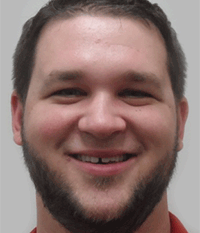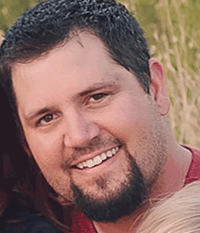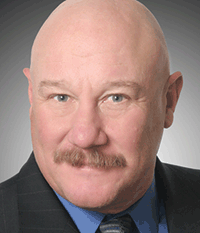The one-person safety team
Three professionals share their experiences of being the only dedicated safety pro onsite

Key points
- Safety pros say it is important for one-person safety teams to be visible and hands-on in the field. Such an approach fosters respect and improves communication.
- Rather than trying to tackle a wide-ranging safety initiative in one fell swoop, one-person safety teams can benefit from implementing smaller, more-frequent changes that lead to a larger goal.
- To avoid burnout, safety pros say to leave work at work. Take advantage of time away from the jobsite to focus on family and other individual passions.
Additional resource
Sometimes, as a safety professional, you have to go it alone.
Maybe you work for a small to midsize organization, and you’re the only dedicated safety professional on staff. Or perhaps you work for a larger organization with several full-time safety professionals, but you serve as the lone safety representative more often than not at your fixed facility or temporary worksite.
No matter the circumstance, being an effective one-person safety team is challenging. Yes, safety involves all levels of an organization. Yes, many employers are committed to worker safety. But the fact remains that a safety professional faces a daunting task when he or she is solely responsible for maintaining the safety of anywhere from dozens to hundreds of workers.
The job is tough – but not impossible. Take it from experts in the field.
Safety+Health spoke with three professionals who spend all or part of their workdays as a one-person safety team. Joey Barnett is a safety supervisor at BTD Manufacturing in Dawsonville, GA, where about 225 employees focus on precision metal fabrication. Sterling Shelton is a safety manager at West Fargo, ND-based Wanzek Construction. Shelton’s team is building a wind farm near the remote town of Hettinger, ND, and he is responsible for ensuring workers stay safe as they work at height and around other hazards. Dave Turner is the director of West Coast Safety at APM Terminals’ facility in the Port of Los Angeles. Turner works to ensure safety for a transient workforce of about 1,600 employees and up to 5,000 outside truckers per day.
 |
 |
 |
| Joey Barnett | Sterling Shelton | Dave Turner |
Here’s what they had to say:
S+H: You’re only one person. How do you make your voice heard?
Barnett: The most important thing I’ve identified is that you have to be visible, you have to be present. We run four shifts – A, B, C, D – and they’re working about 12-hour days. I make sure that I’m present weekly for each one of those groups either to act as a sounding board, to audit, or to be out there and make my voice heard. You can’t really be heard if you’re not there.
Shelton: I started out as a laborer. Coming from being out in the field and dealing with safety professionals prior to getting into the safety field myself, I always took those lessons like, don’t be the one that comes in and just shouts and basically watches from a distance. Get in there and actually get side by side with those people so they get to know you, they understand you’re human just like them, and they get comfortable with you.
Turner: For us, the most important safety person in the terminal is my boss. If he buys into safety and gives me the ability to run and enforce the safety program, it makes my job much easier. The way it works for us is to get all management people involved in the safety program. While I may be the only person who has “safety” as my job title, I ensure that everybody has a big part of the safety program as far as management goes – and they’re all held accountable to the individual parts of that program.
Barnett: The second thing I would say is if you’re not visible on a regular basis in the form of training and monthly safety meetings, then you’re not going to be very effective. The third thing I would say: You’ve got to make sure that the people know you care, and in order to do that, you’ve got to spend time with them. I’m really trying to make sure the guys realize it’s not just a regulatory compliance issue here. I’m trying to engage the employees on a line of, “Hey, this is not just for the sake of because you have to, but let’s talk about why you want to do this.” For me, it’s awesome to interact with the employees and learn their stories and learn what their motivation is with their families at home.
Shelton: Now, what you’re doing is you’re kind of burning the candle at both ends. You’re working up a relationship with the individuals out in the field, trying to implement those small changes to get to the bigger picture, but you’re also working on the other side of it with the leadership onsite.
S+H: When you are the lone safety professional, how do you avoid feeling isolated or overwhelmed? How do you stay sane?
Barnett: I can’t say that I avoid that all the time. Because, honestly, there are a lot of those days. I think that’s the reality of being the one-man team. It can be very lonely. It can be very isolated. I don’t know how to put this other than – this is my personal testimony here – I believe my faith in God helps me, to be honest with you.
Shelton: A lot of times, when you’re working on the road, there’s really no way of getting away from it. On the wind site, I’ll be at work at 6 o’clock in the morning, and sometimes I won’t get off work until 8, 9, 10 o’clock at night. For the longest time, it took me a while to try to figure that out. But once you’re offsite, you’re no longer on the job. At the end of the day, just focus on things outside of work.
I’ve got a family, so that helps motivate me and drive me to stay positive, stay the course. A lot of times, it’s trying to see what can work, what will be good or better for the people the next day. As far as trying to stay sane, it’s just having to make a mental note of pulling yourself off the job once you’re off the clock.
Turner: I think you need to develop a pretty comprehensive action plan and set reasonable expectations and timelines. I think to say there’s a one-person safety team is wrong. I mean, if you’re in a situation where you’re the only person that lives and breathes safety, then you’re probably in the wrong situation. You need to have support from your boss, and you need to find a way to incorporate the management at the very least into the safety program and have some teeth and some ability to make sure that they provide support for the safety program.
Barnett: I think it’s easier if you focus on each individual problem. Once per week, what’s helpful is to sit down and re-prioritize my list of what’s on my plate. Yeah, the list may seem to get longer and longer and longer, but if you try to keep things in perspective, you can take that minute to refocus and take a look at the big picture of what’s going on and re-prioritize what’s the most important thing, what’s the most urgent thing. That tends to help as well in not feeling so overwhelmed.
S+H: How do you incorporate larger, across-the-board safety initiatives while juggling the smaller, day-to-day tasks that keep you busy?
Turner: I juggle it by being more of an administrator of the program. If I was the guy going out and being a safety policeman, it’s beyond the capabilities of one, two, three or even six people to do at this facility.
Shelton: It mainly comes down to keeping a realistic idea about it. You can’t change everybody overnight. You slowly incorporate it. In the past, I used to try and say, “Here are the rules; this is what we need to start complying with.” But it’s easy to forget that you’re dealing with many different personalities. What I’ve learned is, treat it like a bowl of soup, or a bowl of oatmeal: one tablespoon at a time, and you’re going to get it out. Implement small changes and slowly work your way until everybody’s on the same page. Because if you try to implement the rule in full force, it’s just not going to happen, and you’re going to drive yourself nuts.
Barnett: One thing that I’ve learned that I would advise any other aspiring safety professional to do is to be realistic when you come in. They say that Rome wasn’t built in a day, but it was built eventually, right? If you come into a situation – and most situations do exist in that you’re on a small team or you’re by yourself – be realistic. You need to set goals, and you can prioritize those goals, and if you want to elevate a program to a certain level or you want to see numbers increase or decrease to certain levels, be realistic and don’t give up. You can’t be easily discouraged and get into a position like this. If you are, I honestly think you’re in the wrong profession. Because it’s very challenging, but it can be highly rewarding.
S+H: What are some of those rewards? What keeps you motivated?
Barnett: Ultimately, I tend to take the stereotypical postgame interview of the quarterback after the football game: I wouldn’t be here without the guys on the floor working safe, because I can’t do their job for them. Everybody stepped up. So, typically, I don’t step into that too much, but I will say that yes, it does feel good behind the scenes, behind closed doors, when you’re able to look yourself in the mirror and see that there are some things that you’ve done that have been really beneficial. Ultimately, our No. 1 goal is to make sure that everybody goes home the same way they came in.
Shelton: You’ve just got to remember why you’re here and why you’re doing it and the importance of your job. For me, I don’t want to be the individual who has to make that phone call because somebody got hurt.
Turner: I like getting things done. We’re lucky here at my company because they have a safety culture that is extraordinarily high. Every meeting starts off with safety, and every time a senior executive visits the facility, the first thing that is done is a safety ride. And not a dog-and-pony-show safety ride. I mean a nuts-and-bolts safety ride with the safety professional and whoever that might be – even if it’s the president of the company – solo. It is pretty intense. It does give quite a bit of ability to influence the safety culture and the safety system.
Barnett: This position is not for the faint of heart. If you’re a one-man pack, you’ve got to be bold, and you’ve got to get out there and identify those potential incidents before they occur. It’s rewarding when it works, it’s challenging and it can be tough sometimes when you’re facing a rough stretch, but you’ve got to be really internally motivated.
Shelton: Once you get the leadership on board and the individuals out in the field on board – in the end, when it all comes together and starts clicking, it’s pretty awesome. Because by slowly implementing [safety improvements], you just all of a sudden see it, and it’s clicking every day. That’s the satisfaction that you get: I did it.
Post a comment to this article
Safety+Health welcomes comments that promote respectful dialogue. Please stay on topic. Comments that contain personal attacks, profanity or abusive language – or those aggressively promoting products or services – will be removed. We reserve the right to determine which comments violate our comment policy. (Anonymous comments are welcome; merely skip the “name” field in the comment box. An email address is required but will not be included with your comment.)

